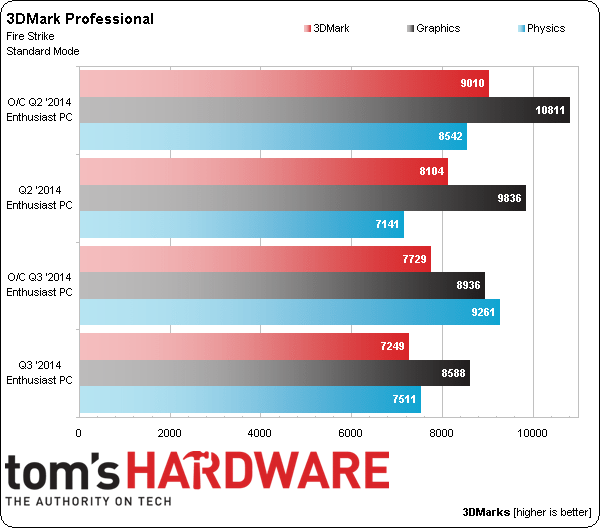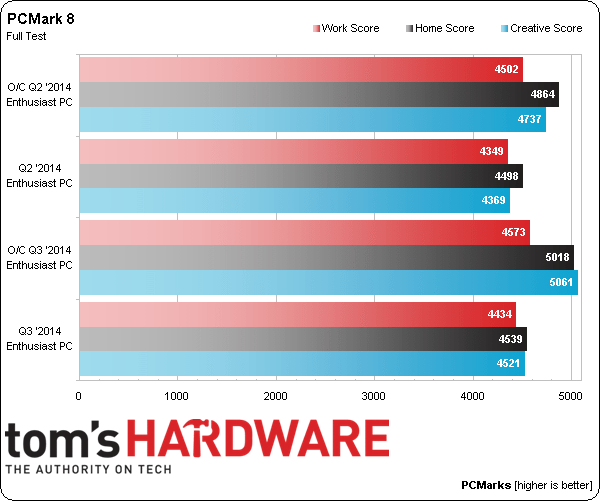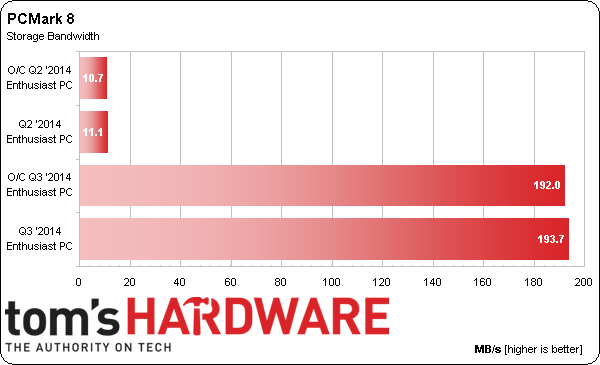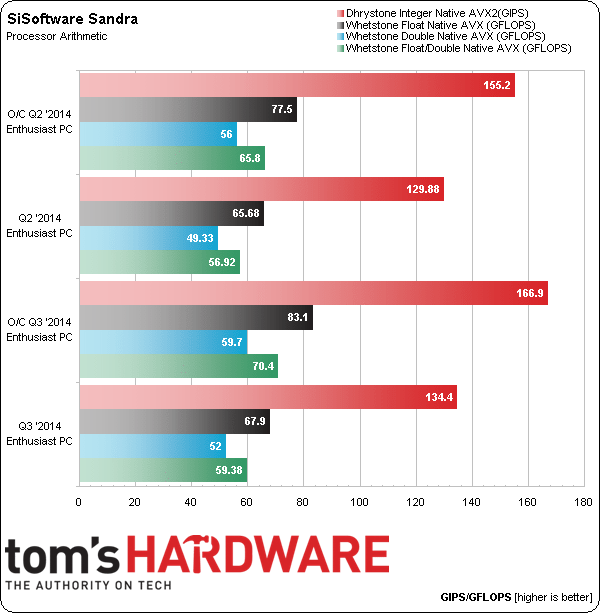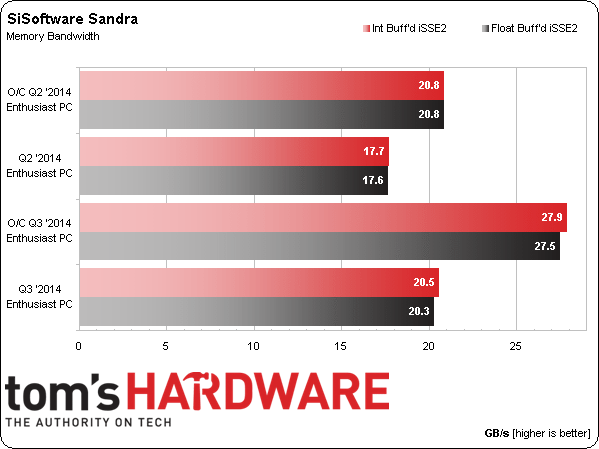System Builder Marathon Q3 2014: Mainstream Enthusiast PC
Results: Synthetics
We begin our benchmark analysis with a handful of synthetic tests designed to emphasize differences between the various subsystems that changed between last quarter's configuration and this PC. The biggest differences this time around will likely be reflected in graphics-oriented tests thanks to the disparity between the GeForce GTX 770 and Radeon R9 290. In addition, we're hoping to see the Core i5-4690K's higher overclock give it a notable advantage.
When we break down the test's individual components, we can see the Physics suite, in blue, favors the new build's higher-clocked Core i5-4690K, while the Graphics component, in black, demonstrates a sizable lead for the Radeon R9 290. The red result represents the overall 3DMark result, which reflects an advantage for last quarter's PC.
The graphics card isn't much of a factor when it comes to PCMark, and the new build gets extra points for its high clocks and memory bandwidth.
Now that we've added an SSD back into the mix, you can see a huge difference in storage performance. This is a good approximation of the experience you'll have when booting off of these drives, too.
Intel's Core i5 processors perform neck and neck in Sandra's Arithmetic module, with the newer 4690K enjoying a slight lead thanks to its higher stock and overclocked clock rates.
The cryptography Encoding/Decoding benchmark is accelerated by AES-NI, so performance is dictated by the rate at which system memory can feed data into the CPU. The new build's faster memory allows for a substantial lead.
As the cryptography test suggested, there is a sizable gap in memory subsystem performance between these two systems. My newer build's memory defaults to 1800 MT/s, while the XMP profile increases it to 2400 MT/s. Contrast this with the 1333 MT/s default/1600 MT/s overclocked memory in the last quarter's build.
Get Tom's Hardware's best news and in-depth reviews, straight to your inbox.
Don Woligroski was a former senior hardware editor for Tom's Hardware. He has covered a wide range of PC hardware topics, including CPUs, GPUs, system building, and emerging technologies.

